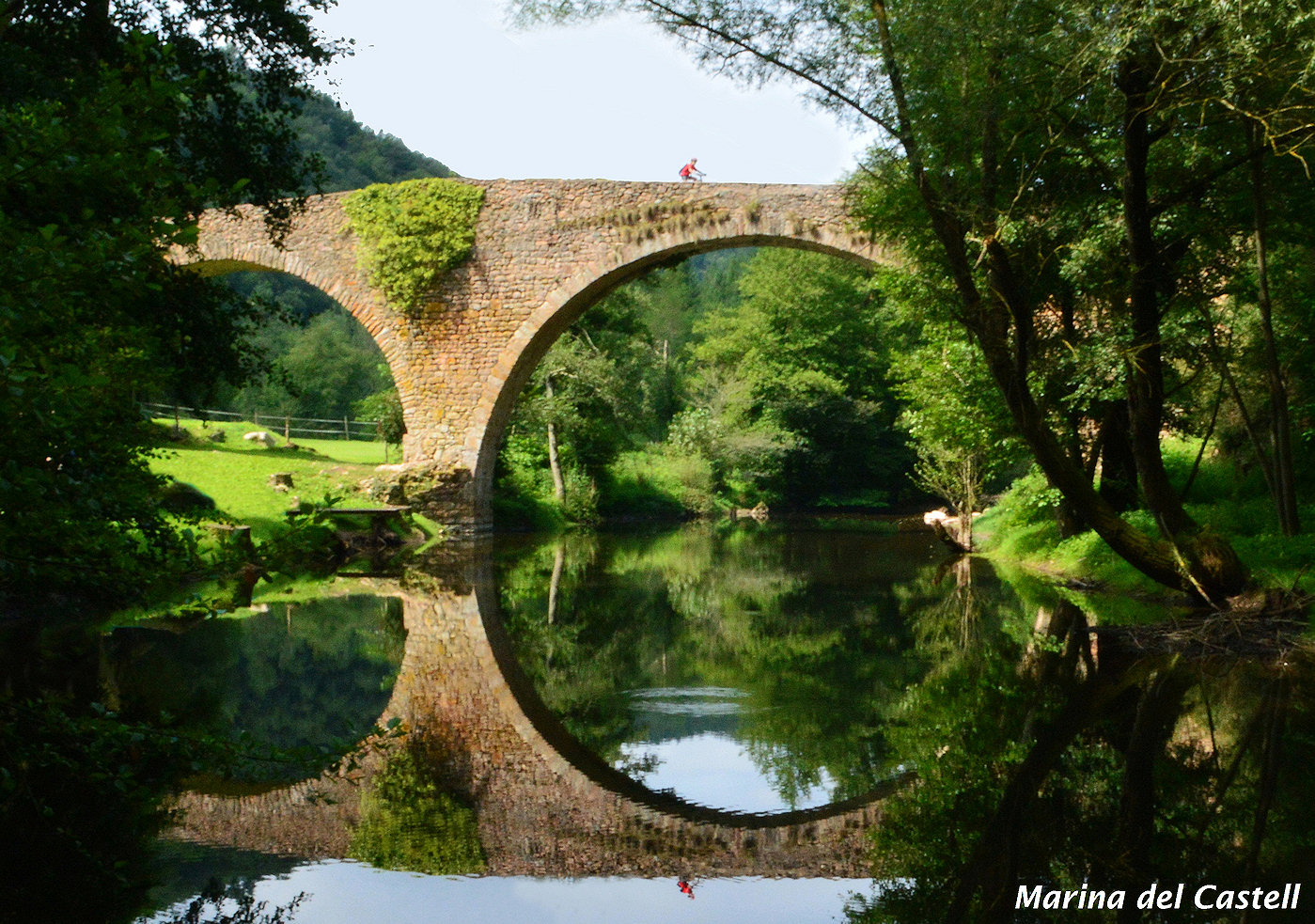

Workflow on the Roman Bridge at Limyra: the falsework was moved to another opening as soon as the lower arch rib had been completed They are also expensive to build wherever labor costs are high. However, relative to modern alternatives, such bridges are very heavy, requiring extensive foundations. Traditional masonry arches are generally durable, and somewhat resistant to settlement or undermining. Where random masonry (uncut and unprepared stones) is used they are mortared together and the mortar is allowed to set before the falsework is removed. When masonry (cut stone) is used the angles of the faces are cut to minimize shear forces. Other materials that were used to build this type of bridge were brick and unreinforced concrete. Masonry arch bridges use a quantity of fill material (typically compacted rubble) above the arch in order to increase this dead-weight on the bridge and prevent tension from occurring in the arch ring as loads move across the bridge. The more weight that was put onto the bridge, the stronger its structure became. In the first compression arch bridges, a keystone in the middle of the bridge bore the weight of the rest of the bridge. Each arch is constructed over a temporary falsework frame, known as a centring. As a result, masonry arch bridges are designed to be constantly under compression, so far as is possible. Stone, brick and other such materials are strong in compression and somewhat so in shear, but cannot resist much force in tension. The old stone arch bridge over the Kerava River in Kerava, Finland The late Roman Karamagara Bridge in Cappadocia may represent the earliest surviving bridge featuring a pointed arch. This was to be the longest arch bridge for a thousand years both in terms of overall and individual span length, while the longest extant Roman bridge is the 790 m-long (2,590 ft) long Puente Romano at Mérida. Trajan's bridge over the Danube featured open- spandrel segmental arches made of wood (standing on 40 m-high (130 ft) concrete piers). The 330 m-long (1,080 ft) Limyra Bridge in southwestern Turkey features 26 segmental arches with an average span-to-rise ratio of 5.3:1, giving the bridge an unusually flat profile unsurpassed for more than a millennium. The Romans also introduced segmental arch bridges into bridge construction. The outside was usually covered with brick or ashlar, as in the Alcántara bridge.



Roman engineers were the first and until the industrial revolution the only ones to construct bridges with concrete, which they called Opus caementicium. in the Pons Fabricius in Rome (62 BC), one of the world's oldest major bridges still standing. Their bridges featured from an early time onwards flood openings in the piers, e.g. The Romans built both single spans and lengthy multiple arch aqueducts, such as the Pont du Gard and Segovia Aqueduct. Generally, Roman bridges featured wedge-shaped primary arch stones ( voussoirs) of the same in size and shape. The advantages of the segmental arch bridge were that it allowed great amounts of flood water to pass under it, which would prevent the bridge from being swept away during floods and the bridge itself could be more lightweight. Roman arch bridges were usually semicircular, although a number were segmental arch bridges (such as Alconétar Bridge), a bridge which has a curved arch that is less than a semicircle. A more complete survey by the Italian scholar Vittorio Galliazzo found 931 Roman bridges, mostly of stone, in as many as 26 countries (including former Yugoslavia). A list of Roman bridges compiled by the engineer Colin O'Connor features 330 Roman stone bridges for traffic, 34 Roman timber bridges and 54 Roman aqueduct bridges, a substantial part still standing and even used to carry vehicles. Īlthough true arches were already known by the Etruscans and ancient Greeks, the Romans were – as with the vault and the dome – the first to fully realize the potential of arches for bridge construction. The 4th century BC Rhodes Footbridge rests on an early voussoir arch. The well-preserved Hellenistic Eleutherna Bridge has a triangular corbel arch. The stone corbel arch bridge is still used by the local populace. Possibly the oldest existing arch bridge is the Mycenaean Arkadiko Bridge in Greece from about 1300 BC.


 0 kommentar(er)
0 kommentar(er)
